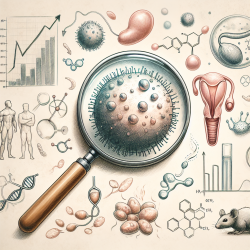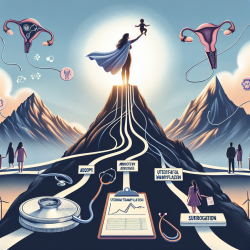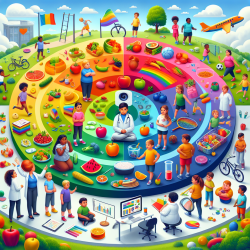Introduction
In the realm of genetic disorders, Leydig Cell Failure (LCF) stands as a formidable challenge, leading to testosterone deficiency and male infertility. Traditional therapies have shown limited success, leaving a gap for innovative solutions. Enter AAV-mediated gene therapy, a beacon of hope that promises to revolutionize treatment for LCF. Recent research has illuminated its potential to restore testosterone production and fertility, offering a new horizon for practitioners and patients alike.
Understanding the Research
The groundbreaking study, "AAV-mediated gene therapy produces fertile offspring in the Lhcgr-deficient mouse model of Leydig cell failure," explores the use of adeno-associated virus (AAV) vectors to deliver gene therapy. The researchers identified AAV8 as an efficient vector for driving exogenous Lhcgr expression in progenitor Leydig cells, leading to significant recovery in testosterone production and fertility in Lhcgr-deficient mice. This approach not only restored testosterone levels but also resumed sexual development and spermatogenesis, producing fertile offspring.
Implications for Practitioners
For practitioners, this research offers a blueprint for advancing treatment strategies in genetic LCF. Here are key takeaways to enhance your practice:
- Stay Informed: Keep abreast of the latest advancements in gene therapy through conferences and publications. Understanding the nuances of AAV vectors and their applications can inform your treatment protocols.
- Collaborate and Network: Engage with peers and researchers in the field to share insights and experiences. Networking can lead to collaborative opportunities that drive innovation in treatment approaches.
- Advocate for Research: Encourage further research into AAV-mediated gene therapy. Supporting studies in larger animal models or clinical trials can pave the way for human applications.
- Patient Education: Educate patients and families about the potential of gene therapy. Transparent communication about the benefits and limitations can empower informed decision-making.
Future Directions
The promising results from the Lhcgr-deficient mouse model suggest that AAV-mediated gene therapy could be a viable treatment for various forms of genetic LCF. However, the journey from bench to bedside requires meticulous research and clinical trials. Practitioners should advocate for and participate in studies that explore the safety and efficacy of gene therapy in human subjects.
Conclusion
AAV-mediated gene therapy represents a transformative approach to treating Leydig Cell Failure. By harnessing the power of genetic science, practitioners can offer renewed hope to patients facing infertility due to genetic disorders. As we stand on the brink of a new era in medicine, let us embrace the potential of gene therapy to change lives.
To read the original research paper, please follow this link: AAV-mediated gene therapy produces fertile offspring in the Lhcgr-deficient mouse model of Leydig cell failure.










